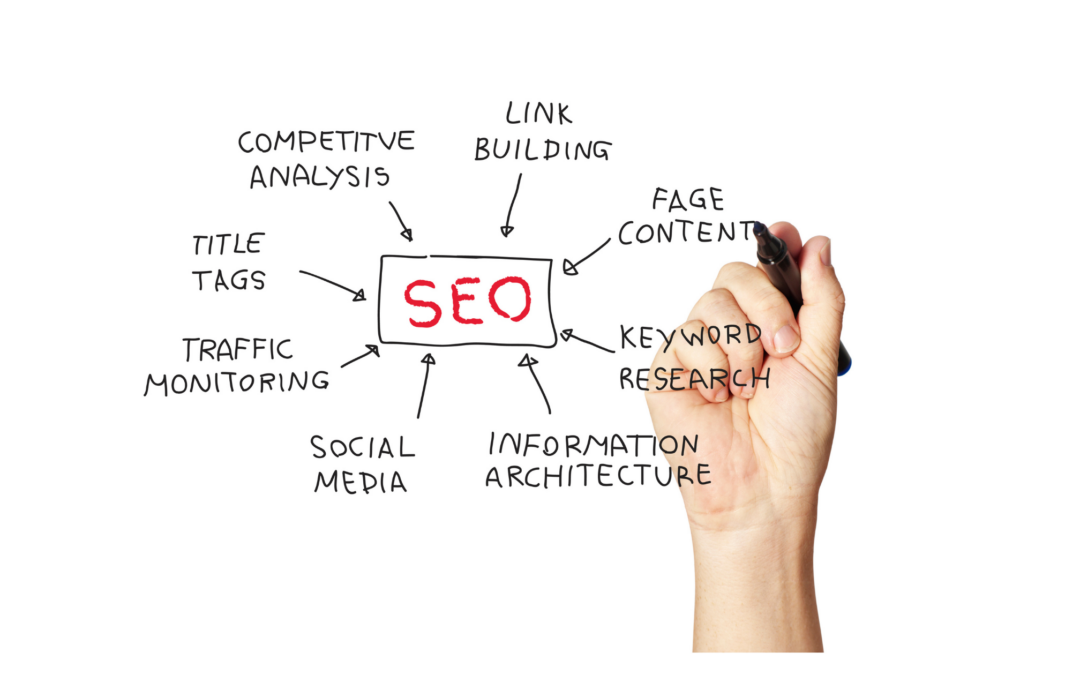So, you’ve dipped your toe in the SEO waters and now you want to take a quick trip to the deep end. Okay, this might just be middle of the pool territory, but on-page SEO is an incredibly important part of your overall SEO strategy. So, grab your water wings and let’s get going.
What is on-page SEO?
If you’ve taken a look around my website, you’ve probably seen that I call myself an SEO copywriter. If you’re totally new to SEO, start here.
Now that you know it’s all about creating compelling copy to turn interest into sales AND getting eyes on your page in the first place, let’s talk about on-page SEO specifically.
In the simplest terms, on-page SEO refers to the actual SEO content on your website. So this could include the SEO web copy…the words on your home page, about, services, etc. As well as things like your headers, meta descriptions, title tags, URLs, and so on.
And I hate to get too technical, but it also includes your HTML source code. Let’s let your web designer worry about that for now!
As an SEO copywriter, my primary focus is on on-page SEO and creating search engine optimized copy that’s also compelling and fun to read.
On-page ranking factors
You can’t talk much about SEO without mentioning ranking factors.
What are ranking factors, you ask?
These are the criteria a search engine looks at when it determines how it will rank your page. And remember, the higher you rank, the more likely your page will show up in relevant search results!
The ultimate goal is to be ranked #1 for a certain term.
In action, that could look something like this: My other job is my vegetarian comfort food blog, XO&So. If I were to rank #1 for ‘vegetarian comfort food,’ that would mean I would show up FIRST when people search those keywords.
What are on-page ranking factors?
Let’s go right to Google to tell us exactly (well almost exactly–specific ranking algorithms are kept notoriously secret!) what factors they use for ranking:
- Purpose of the page
- Is the purpose of the page clearly defined?
- Quality and quantity of content
- Provided information about the website and the website owner
- User interaction with the page (his includes things like bounce rate (how many users only view one page before exiting your site) and time spent on page)
Now, when it comes to the purpose of all of these factors, they contribute to what’s known as E-A-T.
Expertise, authority, and trustworthiness (E-A-T)
In August 2018, Google announced their expertise, authority, and trustworthiness or E-A-T algorithm update.
This update includes a greater emphasis placed on…wait for it…expertise, authority, and trustworthiness. Many of these factors are part of your on-page strategy, but certain parts relate more to off-page rankings (think backlinks).
Keep in mind, we’re really just scratching the surface when it comes to the mystery and magic of Google’s search algorithms.
I know you don’t have all day to read about it, so I’m covering what I think is most important in this post. To do a deeper dive for yourself, head here.
What to do right now to improve your on-page SEO ranking factors
Now that we’ve talked about what on-page SEO means and its ranking factors, let’s talk about improving yours!
Here are two places to start.
1. Write a really great About page
I don’t just mean an About Me page that looks great. Sure, that’s nice to have.
But it also needs to include specific information meant to improve your E-A-T factors. The more Google knows about your website and YOU, the creator, the better. This is especially important for establishing authority–another thing Google loves.
What to include in your About page
Here are a few ideas for things to add to your About page:
- Information about you and your team, including your specific expertise and experience
- Your business address and contact information (make sure this is on your contact page too)
- Links to awards or positive press about you/your business
2. Add other high-quality, relevant content to your site
This is where web copy comes in. Your site needs great web copy not only to call visitors to action, but to demonstrate its E-A-T to Google as well. When both of these are done well, that’s SEO copywriting in action.
Google likes websites with lots of content to crawl. The more the merrier…especially if it’s “high-quality” content. More on that in a minute.
So, you can hire me to add high-quality website content for you, or work on creating your own.
This includes:
- Writing lengthy blog posts that are SEO optimized (for some quick blog writing tips, go here)
- Bulking up your main page content and including more relevant information
- Making sure your pages have meta descriptions, optimized titles, title tags, and headers, each optimized for SEO too
Ready to get started?
On and off page SEO are both super important to your overall SEO strategy. But if you have to start with one, let it be on-page.
I know this might all seem overwhelming.
I’ve been reading, researching, and practicing not only SEO but compelling copywriting for years. It’s something I’m truly passionate about–and it’s certainly not a passion I expect everyone to share!
But if you can’t be passionate about it, I hope I’ve at least demonstrated how absolutely critical SEO copywriting is to the success of your website and online presence.
Let me put my passion to work for you and take care of all of these ranking factors and more for you. Take a look at my SEO strategy and copywriting services here, or drop me a line at chelseakram@gmail.com and let’s talk more.
Until next time!
-– Chelsea Kram

Recent Comments